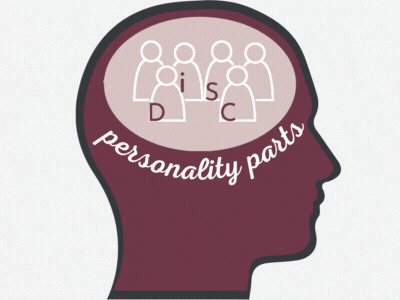When it comes to corporate communication and team development, understanding individual behaviors and personality “types” has always been a cornerstone for fostering better communication. Traditional models like the DiSC personality assessment have provided valuable models for decades (almost 100 years!), aiding in the identification of the decisive, influential, supportive, and conscientious traits within team environments. However, the advent of DiSC DiSCO™ marks a significant leap forward, integrating the latest neuroscience insights with a trauma-informed, neurodiversity-affirming approach to truly honor the complexity of human behavior and interaction.
The Limitations of Labeling and the Call for a More Nuanced Approach
Let’s consider labeling, a common practice in personality assessments, from the perspective of Social Categorization Theory (SCT) and Social Identity Theory. These theories explore how individuals identify and categorize themselves and others into groups, leading to a shared identity based on perceived similarities and differences. Debbie Geissler’s master thesis, The Black and White Effect of Being Labeled –The influence of being labeled by the DiSC personality model from the labeled participants examines the impact of labeling through the DiSC model, shedding light on the nuanced experiences of individuals subjected to such categorization.
Labeling, as explored in traditional personality assessments like DiSC, is a 2-sided coin. While it simplifies the understanding of complex human behaviors into digestible categories, when we flip the coin, we may reveal these issues:
- Oversimplification: Traditional labeling tends to reduce the multifaceted nature of personality into broad strokes, ignoring the nuanced behaviors and traits that do not fit neatly into one category. This can lead to a superficial understanding of team dynamics, failing to capture the intricate interplay of various personality factors at work.
- Fixed Identity Perception: Labeling can cement the perception of fixed identities, discouraging the recognition of growth and evolution within individuals. Geissler’s findings suggest that participants felt constrained by their assigned labels, which did not always reflect their complete range of behaviors or the fluidity of their personal development.
- Potential for Stereotyping: By categorizing individuals into distinct groups, there’s a risk of fostering stereotypes. This can lead to assumptions and biases that hinder genuine interpersonal connections and collaboration within teams.
- Neurodiversity is Neglected: Traditional models often overlook the diverse cognitive landscapes of individuals. Geissler’s research underlines the discomfort felt by participants who did not see their full selves reflected in their assigned categories. In doing research for our DiSC workshop, we also found that participants who identified as neurodivergent, within Classic DiSC programs were left with “a bad taste in [their] mouth.”
It’s time to move past these shortcomings. That is why we created DiSC DiSCO™.

DiSC DiSCO™: A Modern Answer to an Age-Old Dilemma
Enter DiSC DiSCO™, a pioneering and welcomed evolution of the classic DiSC model, thoughtfully designed to address the shortcomings of traditional labeling. By embracing modern neuroscience, DiSC DiSCO™ acknowledges that we possess more than just four personality parts. It offers an expanded view that recognizes the various “parts” within each person, including a “part that’s not a part,” reflecting the fluidity and diversity of human personalities. This approach aligns seamlessly with Internal Family Systems (IFS) and trauma-informed approaches, ensuring a holistic and respectful understanding of individual differences. DiSC DiSCO™ does not label anyone. We are, afterall, not our parts.
DiSC DiSCO™ stands out by offering:
- Integration with Contemporary Neuroscience: Updates to the classic model based on the latest research, incorporating multiplicity of mind
- Trauma-Informed, Neurodiversity-Affirming Framework: A commitment to understanding and accommodating the varied experiences and needs of all participants.
- Inclusive Language and Practices: Ensuring that every individual feels seen, heard, and valued, regardless of their unique personality composition (e.g using the singular pronoun they/them, inclusive graphics in slides, and more)
- Accessibility and Flexibility: With economic affordability and custom workshop options, DiSC DiSCO™ is tailored to meet diverse organizational needs, from conflict resolution to enhanced communication strategies.
The Future of Team Dynamics
As organizations strive to navigate the complexities of human behavior and team interaction, DiSC DiSCO™ offers a beacon of hope. It represents a paradigm shift towards a more inclusive, nuanced, and scientifically grounded understanding of personality dynamics within teams. By moving beyond the restrictive bounds of traditional labeling and embracing the multifaceted nature of individual identities, DiSC DiSCO™ paves the way for more harmonious, productive, and understanding workplace environments.
While SCT and Social Identity Theory provide foundational insights into the mechanisms of identification and categorization, DiSC DiSCO™ responds to the call for a more evolved, nuanced approach. It encourages us to see beyond labels, recognizing the beautiful complexity within each team member and harnessing that diversity for collective success.
Is DiSC Still Relevant Almost 100 Years Later?
D, i, S, and C parts are common, so getting to notice these 4 is a great starting point for self-exploration and understanding. However, these are rigid boxes to fit ourselves into. We all have many more parts beyond the common four, and some of us may not strongly identify with any of the D, i, S, or C parts.
Neurodiversity is the understanding that variations in brain functioning are a natural part of human diversity. This concept embraces the idea that there are many different ways of thinking, learning, and interacting with the world, all of which are equally valid. Rather than viewing certain cognitive patterns as aberrant, neurodiversity recognizes them as variations that contribute to the richness of human culture and innovation.
Neurodiversity affirms that there’s no one ‘right’ way to think, learn, or be. So when we run a DiSC DiSCO™ workshop, we invite our participants to consider not just the D, i, S, and C parts of themselves, but whatever parts they meet. And then, of course, there’s the “part that’s not a part” — the Omniversal Self.